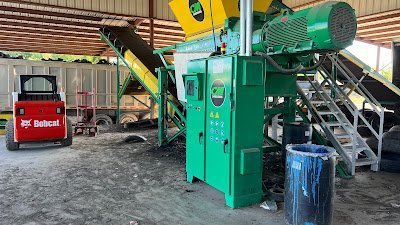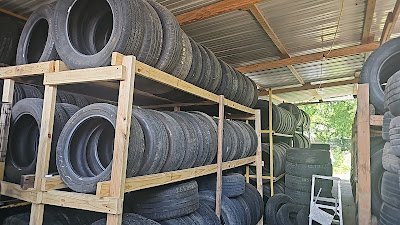Where Do Used Tire Shops Get Their Tires?
Let’s talk about something most folks never think about until they’re staring at a $800 quote for new tires: where do all those used tires actually come from? The used tire business is fascinating once you peek behind the curtain, and knowing how these shops source their inventory can help you make smarter buying decisions.
The Trade-In Game
You know those tires sitting in garages all over town? The ones people replace because they want better snow handling, even though they still have decent tread? That’s prime inventory for used tire shops. Take what happened at a local shop last week – a customer traded in a set of Michelins with 65% tread left just because they wanted something more aggressive for their truck. Those “old” tires? Perfect for someone looking to save serious cash on nearly-new rubber.
Most shops offer $10-20 per tire on trade-in, depending on the condition. Better than letting good rubber collect dust in the garage.
The Auto Shop Pipeline
Here’s something most folks don’t know: local mechanics might not be in the tire business full-time, but they’re quietly supplying used tire shops all over town. These partnerships work like clockwork – repair shops get $15-25 for each good tire they pass along, and the tire shop handles all the cleaning and resale.
The numbers tell the story: a typical dealership service department might offload 30 tires in a single week, most with 50-70% tread left. Those tires end up back on the road at about a third of their original price.
The Wild World of Tire Auctions
Ever wonder what happens to the tires on those repo’d cars or retired police cruisers? Welcome to the world of tire auctions. While it might not make for exciting TV, these auctions keep tire shops stocked with quality rubber at bargain prices.
Insurance auctions are especially interesting – perfectly good tires come off totaled vehicles all the time. Those practically new Continentals that got pulled off a fender-bender special? They might show up at a local shop for $70 each instead of $200+.
Fleet Deals: The Hidden Goldmine
Here’s an industry secret: rental companies and delivery fleets replace their tires on a strict schedule, often way before they’re actually worn out. Smart tire shops build relationships with these fleet managers and snag those takeoffs in bulk.
The sweet spot? Mid-sized rental locations and local delivery companies. They’re big enough to provide steady supply but small enough that the national chains haven’t locked them down with exclusive contracts. A shop might pay $20-30 per tire and sell them for $45-60, still way below new tire prices.

The Recycling Center Connection
That tire recycling center on the edge of town isn’t just a tire graveyard. Used tire shops regularly scout these places, paying $3-8 per tire for the good stuff before it gets processed.
Some shops even partner with retreading facilities. While retreads mostly show up on commercial trucks these days, these connections help shops spot which tires are worth saving and which ones are ready for retirement.
Walk-In Sales: The Community Connection
Sometimes the best inventory walks right through the front door. Smart shops keep cash on hand for walk-in sellers, usually offering $5-20 per tire depending on brand and condition. It’s not their biggest source, but it creates a steady stream of local inventory and helps build neighborhood connections.
Quality Control Matters
Here’s the part that separates the good shops from the questionable ones: inspection and testing. Legitimate used tire shops don’t just eyeball the tread and call it good. They’re checking for:
- Tread depth across the entire surface
- Signs of uneven wear that might indicate alignment issues
- Sidewall damage or repairs
- Age indicators (those little numbers on the sidewall tell a story)
- Previous repair quality
- Signs of dry rot or weathering
Smart shops also keep detailed records of where each tire came from. That way, if there’s ever an issue with tires from a particular source, they can track it down and adjust their buying accordingly.
Seasonal Shifts in Supply
The used tire market has its own rhythm throughout the year. Spring brings a flood of winter tires as people switch to all-season rubber. Fall sees performance summer tires hitting the market as drivers prep for winter weather. Smart shoppers can use these patterns to their advantage, especially when looking for seasonal specific tires.
The Online Marketplace Factor
While most used tire shops still focus on local sourcing, online marketplaces are changing the game. Wholesale networks like Tire Dealer’s Warehouse and large regional distributors now offer online portals where shops can browse available inventory, complete with detailed inspection reports and tread measurements. Some shops even use specialized B2B apps to get instant notifications when specific sizes or brands become available.
For hard-to-find sizes or specialty tires, these digital networks are a goldmine. A shop in Atlanta might snag a set of rare SUV tires from a dealer in Dallas, or a California shop might source snow tires from Colorado. Just remember – reputable shops still inspect everything in person, no matter where it comes from.
Playing By The Rules
Used tire shops aren’t just winging it – they have to follow some pretty strict guidelines. Most states require shops to inspect each tire for safety issues like sufficient tread depth (usually 2/32 inch minimum), no sidewall damage, and no dangerous repairs. Some states even require shops to grade and label tires based on their condition.
The Department of Transportation (DOT) keeps tabs on this stuff too. Every tire has a DOT code that shows when it was made, and many shops won’t resell tires over a certain age – usually 6-7 years old. Smart move, since rubber can break down even if the tread looks good.

The Green Side of Used Tires
Here’s something to feel good about: buying used tires actually helps the environment. Each year, hundreds of millions of tires reach the end of their road in the U.S. alone. When good tires get reused instead of scrapped:
- Less rubber ends up in landfills
- Fewer new tires need to be manufactured
- Less energy gets used overall
- Transportation costs drop
- Raw materials get saved
Plus, proper tire reuse helps prevent illegal dumping – still a big problem in some areas. When tires have value as used inventory, they’re more likely to end up in the right hands instead of ditched somewhere.
What This Means For Your Wallet
Here’s the bottom line: knowing where these tires come from helps you shop smarter. Looking for premium brands? Ask about their trade-ins and auto shop partnerships. Need something reliable but super affordable? Fleet tires might be your best bet.
The best deals often come when you understand the source. Winter tires? Shop in spring. Looking for performance rubber? Fall clearance might be your friend. And always ask about the inspection process – good shops are proud to walk you through their quality control steps.
Pro tip: don’t be shy about asking where a shop gets their inventory. Any decent place will be happy to tell you – if they get weird about it, that’s your cue to try somewhere else.
Got questions about finding good used tires? Drop a comment below. Most tire folks love talking shop, and their insights might save you serious money on your next set.
Featured Image: Tires with worn tread in the backyard of an automotive shop.
Tomwsulcer, CC0, via Wikimedia Commons
Disclaimer: This content was partially produced with the help of AI tools and was reviewed and published by Jamil A.

